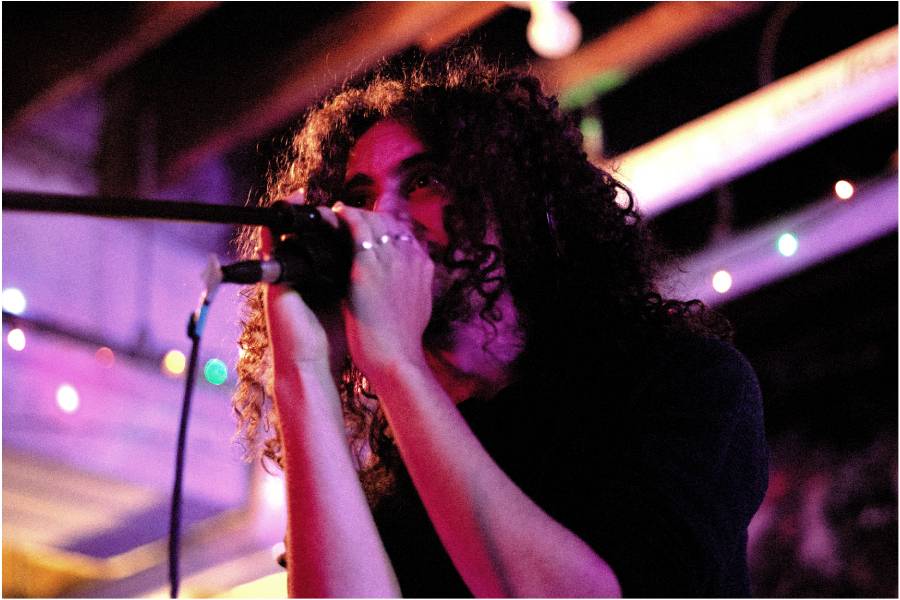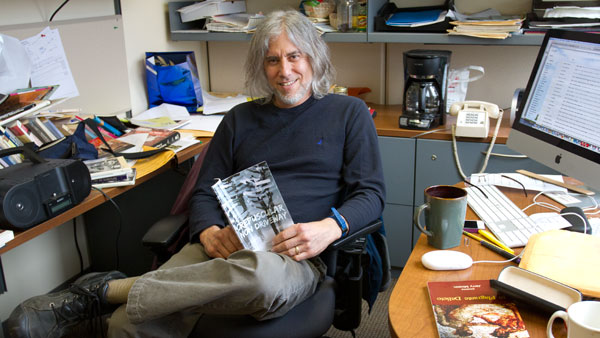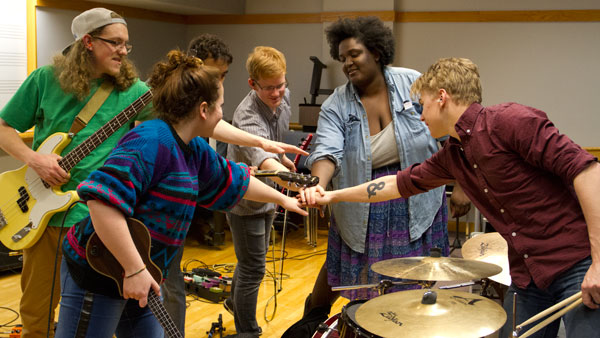Viewers didn’t know the second flight of stairs in Friends Hall would lead them to a theatrical world filled with blood, terror and torture Sunday. But then again, a play based on the brutal “Dirty War” in Argentina suggests nothing less.
The primary objective of junior Alejandro Chavarria’s independent study was to direct “Información para extranjeros,” a play written by Griselda Gambaro. Unknown to many, the Argentinian “Dirty War,” from 1976 to 1983, represents an era in which 30,000 people are estimated to have been “disappeared” at the hands of the military regime.
“Información para extranjeros” is the third play in Spanish that Annette Levine, assistant professor of modern languages and literatures, has helped produce at the college. There will continue to be more plays with the new “Teatro” course Levine is offering in the fall.
To place the audience in the political warfare of this time period, Chavarria chose a traveling play that took audience members through different classrooms set as scenes of hostility and torture. While there were no separate acts, the set kept a cohesive theme that immersed audience members in a dark and mysterious world. Leading up the staircase to the third floor of Friends, every window was covered by black garbage bags to block out sunlight. Entering the hallway was like walking into a haunted house. The audience was not quite sure where to turn and afraid something was lurking behind every corner.
The audience was split up into two groups that were led by guides. This gave each group the ability to establish a bond with one another. Without any traditional opening, the guides quickly got into character and led both groups down different trails. Both guides spoke with urgency, rushing their groups onto the next scene. While narrating in English, they were able to offer a respite from the often bloody, grotesque scenes performed in Spanish.
Though the foreign language could have potentially thrown off viewers, each scene was intense enough for the audience to understand its message. In one scene, the group walks in on a girl sitting underneath a spotlight, shivering and wet. As a man walks around her, pointing a gun to her head, he screams inches away from her face, interrogating her. The girl answers to nothing. All she says is, “Tengo sed” (I’m thirsty). While this scene weighed on the audience emotionally, watching the girl shake in the terror of her captor, other scenes, which looked like snapshots from a fun house, sparked a little comic relief.
One couple sitting in a room tainted with red lighting laughed and giggled about the story of soldiers who kidnapped innocent families. The couple was dressed as dolls, and their tone was so exaggerated that it seemed as if they were hallucinating. It was confusing, but effective, in showing how the secret war threatened the sanity of families.
From the first scene, the play captured the audience. It showed viewers how the Dirty War destroyed families and a nation. Each scene gave more insight into the torture chambers that held thousands of people captive. When a detainee screamed, the audience screamed. When a victim started to shake, the audience quivered. When a police officer shouted for everyone to be quiet, the audience didn’t make a sound.
The most impressive part of the show was the cast, which was completely composed of students, many of whom were native Spanish speakers. Surprisingly, the majority of the actors had little to no theater background, which speaks highly of the director and the support he received from professors Judy Levitt, Jim Utz and Levine.
“Información para extranjeros” could have used a disclaimer. Though there was no real violence, the scenes were, at times, unbearable to watch. However, the importance of the play outweighed its provocative scenes. The audience might not have known the wild adventure it was going on when it walked into Friends 309, but it was clear everyone appreciated the eye-opening experience.




